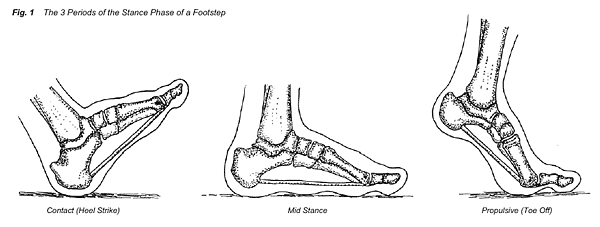Which Split Squat is right for me?
Movements I’m exploring: Split Squat edition
Which split squat / lunge is right for me?
Split squats can be an amazing visual for the GAIT cycle. Essentially, how we are walking and moving through space. With every step, our ribcage and pelvis move and flow, our foot pressure shifts, and our shin angle changes.
Based on people’s structures, one split squat variation may feel easy, while another feels super challenging. Building awareness around this and how you are managing your center of mass can help you choose what works for you and yield better strength gains.
**Center of mass: where you are in space relative to other objects. Oftentimes postpartum, our COM is shifted forward towards our toes. The baby belly quite literally pulled us forward :)
The GAIT Cycle
The GAIT cycle is often talked about in three main phases: heel strike, mid-stance, and toe off. As we move through all three, our body needs access to certain positions to help make this transition seamless, or we may compensate to make it happen. From heel strike to mid-stance we are loading, organizing our body in space to create force into the ground, to then preparing to take off again.
Mid-stance is often the phase I find most challenging for mamas. Due to postural shifts during pregnancy, we take on a position of more external rotation (think feet turned out), limiting internal rotation.
Mid-stance happens just before the heel leaves the ground, and where we can (in an ideal world) organize our center of mass over our stance leg. Oftentimes if we can nail this, in conjunction with breathing (a lot of posterior expansion), glute lengthening, and pronation work, the rest falls into place.
Max force into the ground
Pronation of the foot as the knee tracks over the toes
Max force into the ground
Knee flexed over mid-foot
Adductors (inner thighs) on for stability with internal rotation at the pelvis
Length in the glutes
Internal obliques on the same side maintaining that control and controlling pelvis movement
Staying long on the opposite side
From a pelvic floor perspective, the pronation occurs as we transition from heel strike to mid-stance, also associated with internal rotation of the pelvis and a pelvic floor contraction / ascension. Being able to access this position is also key for your pelvic floor!
The video describes how pelvis movement impacts the pelvic floor.
Once we move from mid-stance to toe off (propelling forward) we re-supinate at the foot with external rotation at the pelvis and pelvic floor relaxation. That “push” forward comes from the glutes as we move through hip extension. We need a strong backside to get that push, so we don’t find it from the low back or by flaring our ribs.
Just for fun, here are two exercises to really help you find that right glute ;)
What does this have to do with split squats? Which one should I try?
Split squats are a great way to visualize the GAIT cycle, and shift where our body is in space with constraints. Understanding your foot pressure and where your ribcage is relative to your pelvis can help you choose which variation to start with.
Heel Strike: If someone is in a more “heel strike” position their ribcage is often behind their pelvis with the heel in front. This may be someone that can drop to the bottom of a squat with ease and sit back on the heels but may do so through a ton of flexing (rounding) and over tucking the booty. This position isn’t “bad,” but the challenge becomes being able to find mid-stance and keep a more stacked position.
Foot pressure: If you sense more weight in your heels and your toes are a bit grippy (to prevent you from falling over), then a rear foot elevated split squat may be a good option for you. Here you are starting from a more centered / forward position with a vertical shin. The focus is on loading through the mid and forefoot in the front leg, encouraging your body to move forward in space. You don’t have to use a bench to start. Even a small foam pad or yoga block can give you that sensation.
The Rear Foot Elevated split squat also helps encourage keeping the booty a bit more lifted and open preventing the overtucking ( a bit more hingey).
Mid-stance: Someone in more of a mid-stance position has more internal rotation available with the ability to load into the ground. While this position may be one a lot of people have trouble with, the goal is to be able to access everything. If we can ONLY access a mid-stance position, we also need the ability to bring ourselves forward and back too.
Foot pressure: If your foot pressure is more balanced, than a regular split squat with both feet on the ground may be a great option for you. In this variation our body is a bit more “neutral,” centered over the front leg. This position puts us in a position to lift heavy and drive force through the ground. Check out this video.
**I’d cue myself to keep elbows up/dumbbell off my chest here ;)
Toe Off: A person in a toe off position is essentially moving forward in space. Oftentimes this is accompanied with a rib flare and more extended / open scissor presentation. Since the weight is more in the forefoot, the goal would be to bring you back over time. Getting the center of mass back will help with ankle mobility limitations, calf tightness, glute clenching, and overall efficiency with running, walking, and everything #momlife.
Open scissor/anterior tilt posture
Areas we can focus on if we are in a toe off position:
Ribcage: focus on expansion on the back
Exhale the lower ribs down without crunching from the top / upper abdominal gripping
Pelvis: Anterior to posterior tilt of the pelvis without squeezing the glutes
A core exercise focused on eccentric abdominal strength / not crunching down with the upper abs.
The glutes are huge in toe off, as we want that “push” forward to come from the glutes through hip extension. But, if we are unable to find true hip extension because we are in that extended posture, our body finds another way to push us forward in space.
Co-contractions and hip extension before knee extension are a key part of programming.
Which split squat is right for me? If you sense the foot pressure more towards your toes, then a front foot elevated split squat may be a great option. Here we start from a more negative shin angle, focusing on keeping the body back in and space and staying more upright. The goal is to shift the center of mass back. The knee will not travel as far forward as other variations. I also love pairing this with a zercher hold.
Front Foot Elevated Tip: If you are VERY extended and in an anterior tilt, a front foot elevated can be tricky. If you feel any pinch in the hips, I recommend starting with a regular split squat variation and then revisit, while also working on posterior expansion and a stacked body position.
Below is a quick cheat sheet to help you decide which split squat is right for you based on your foot pressure: front of foot, neutral, or back in your heels.
Questions on how to integrate split squats into your training? I got you! As a coach my goal is to help postpartum moms bridge the gap between rehab and athletic performance. Return back to running, jumping, and doing all things #momlife with confidence. Check out my coaching options or DIY programs here.
Feel good mama.
xoxo,
Erica




